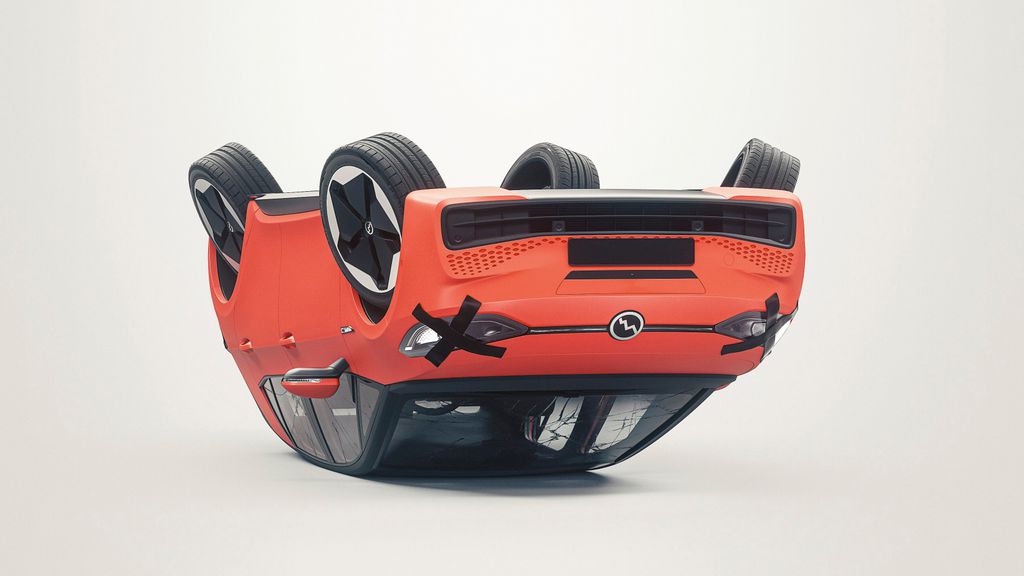
“German Artists Explore the Future of Eastern Europe”

### Chemnitz Pochen Biennale 2024: A Mirror of Eastern Europe’s Struggles and Resilience
**CHEMNITZ, Germany** — The spotlight often graces Chemnitz around its designation as the European Capital of Culture (2025), but in 2024, it burned even more brightly with the ongoing **Pochen Biennale**. This year’s edition, titled *Ex Oriente Ignis* (“The Fire Comes From the East”), grappled with heavy themes such as war, destruction, and survival, with a sharpened focus on contemporary Ukrainian art, juxtaposed against the tumultuous backdrop of Eastern Europe’s political and cultural landscape.
As visitors roamed through the gutted spaces of the Wirkbau, a former textile factory that once boasted industrial ferocity, they were ushered into a labyrinth of sights and sounds portraying the ongoing devastation wrought by Russia’s full-scale invasion of Ukraine, historical references to post-Soviet industrialism, and broader Eastern European struggles. The biennale featured 22 artists, with a predominant representation from Ukraine and Germany, creating a vivid reflection not only of the current war but Europe’s grappling with the social, political, and philosophical rifts opening up in the global East vs. West dichotomy.
### Standing at the Crossroads: Karl Marx and Culture’s Future
Interestingly, the **Pochen Biennale** took place in the steel shadow of Chemnitz’s most recognizable landmark: the looming, 23-foot statue of Karl Marx’s head. Though Chemnitz’s citizens decided to preserve the gargantuan monument after the fall of Communism, it now serves as a contradictory symbol in the city’s venture to become a European cultural beacon. The city, torn between its Soviet-era pride and troubled post-Communist journey of identity, serves as the **perfect canvas** upon which the Pochen Biennale inscribed its contemporary themes — war, survival, and Eastern heritage.
As Kim Brian Dudek, project manager of Pochen Biennale, explained in detail, “The ‘Eastern State of Mind’ slogan represents an effort to narrate Chemnitz’s ideological alignment within Europe. However, this simplistic categorization ignores the fuller intellectual and discursive complexity associated with the East, embodied by cultural figures like Milan Kundera or Czesław Miłosz.”
### The Weight of the Ukrainian Struggle
Among several authoritative works on display was *Tachyoness* (2022) by Ukrainian artist **Lesia Vasylchenko**. The video, generated by artificial intelligence, compressed thousands of photos of sunrises taken between the collapse of the Soviet Union in 1991 and today into an ethereal eight-minute sequence. The result was a poignant meditation on time, existentialism, and resilience, with a nod toward mathematical probability’s famous “sunrise problem” — “What is the likelihood that the sun will rise tomorrow?” Much like Ukraine’s fight for survival, the certainty of tomorrow remains unclear.
Within the same exhibit stood **Danylo Galkin’s “Tourniquet”**, featuring two turnstiles that rotate in only one direction. The piece symbolizes the forced conscription of Ukrainian men and encapsulates the rigid restriction of choice — a theme made tragically potent during Ukraine’s war of national defense.
Further in, **bergenissen’s minimalist installation “European Sleep”** evoked a sterile atmosphere that mimicked an office yet hinted at darker implications, resembling a gas chamber. The conflicting sense of ordinary spaces hiding unimaginable horrors conveyed doubts about the European institutions’ capability to mitigate sociopolitical crises.
### Visual Narratives of Destruction
The biennale also included **Mykola Ridnyi’s “Dark City”** (2015), a chilling model replicating blackened buildings, historical flags, and roads symbolizing a shell-shocked, war-torn world. Ridnyi’s accompanying video *The District* (2022) documents his childhood within the now-ravaged Saltivka district of Kharkiv, a grim reminder of the relentless bombing by Russian forces.
This dedication to documenting Ukraine’s experiences, as well as tapping into collective geopolitical memories of Eastern Europe, extended through multi-disciplinary formats — from film to sculpture. **Maria Matiashova’s “Futile Words, Loud Noises”** (2022) used paper airplanes made of peace treaties as biting satire, while **Total Refusal’s pseudo-Marxist video *How to Disappear* (2020)** illustrated the brutal irony of war in video game form through *Battlefield V*. Total Refusal masterfully points out that the game doesn’t allow players to escape by suicide or the destruction of symbolic military targets, forcing them to engage in a combatant’s grim fate, ultimately an apt metaphor for real conflict zones.
### Creating Space for Discourse in Art
The Pochen Biennale’s exhibition didn’t merely serve as a commentary on victimhood; it underscored that while European discourse on